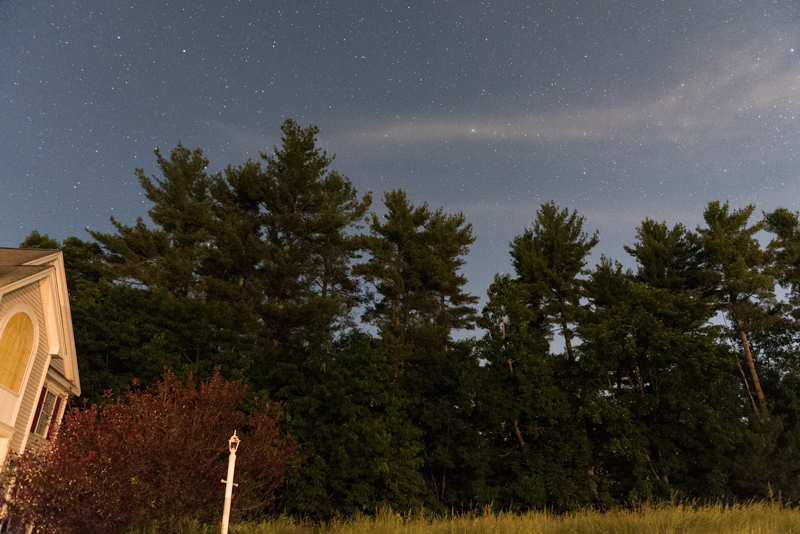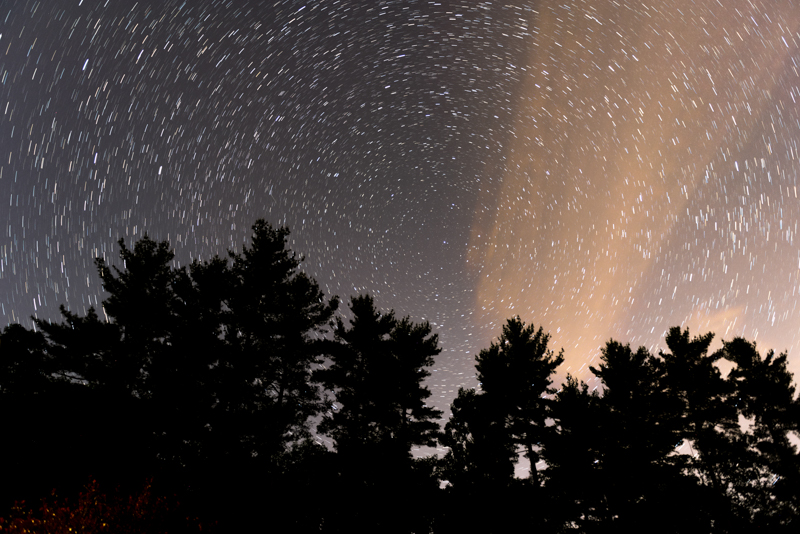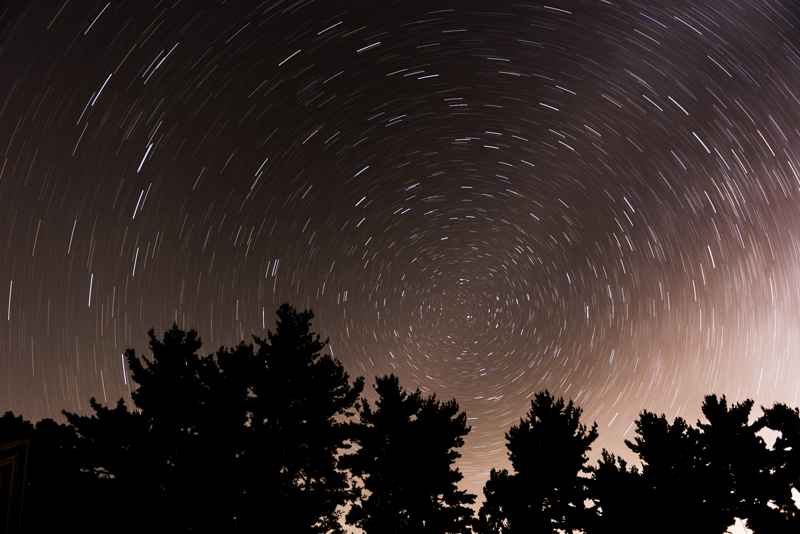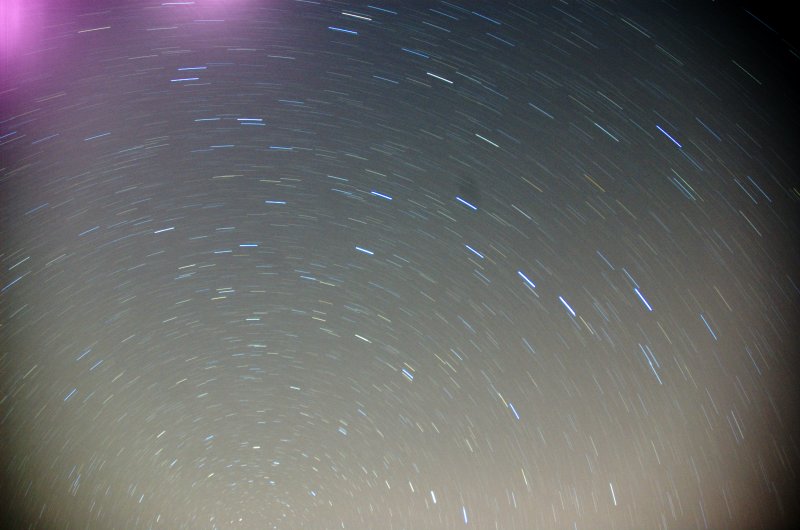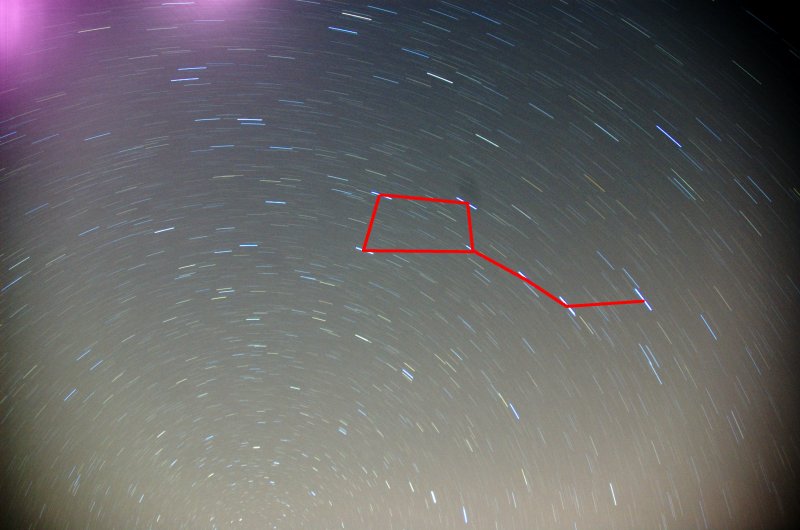Stellafane (2016)
Last weekend we drove to  Springfield, VT to attend the Stellafane Convention. In short, it’s two and a half days of camping, astronomy and telescope making talks, and of course observing. I brought my camera (D750), two lenses (24-70mm f/2.8 and 70-200mm f/2.8), and a tripod. Over the two and a half days, I ended up taking 400 shots of just about everything of some interest. I post processed about 60 and created a gallery. I’m going to include only some in this post, so make sure to check out the gallery for more shots that just didn’t fit the narrative here.
Springfield, VT to attend the Stellafane Convention. In short, it’s two and a half days of camping, astronomy and telescope making talks, and of course observing. I brought my camera (D750), two lenses (24-70mm f/2.8 and 70-200mm f/2.8), and a tripod. Over the two and a half days, I ended up taking 400 shots of just about everything of some interest. I post processed about 60 and created a gallery. I’m going to include only some in this post, so make sure to check out the gallery for more shots that just didn’t fit the narrative here.
Thursday
Thursday was mainly about arriving in the late afternoon, setting up the tent, and doing some observing once it got dark. Photography-wise, my primary goal for Thursday was to get some sky images at 24mm. I tried some long exposure (657 seconds) to get some star trails:
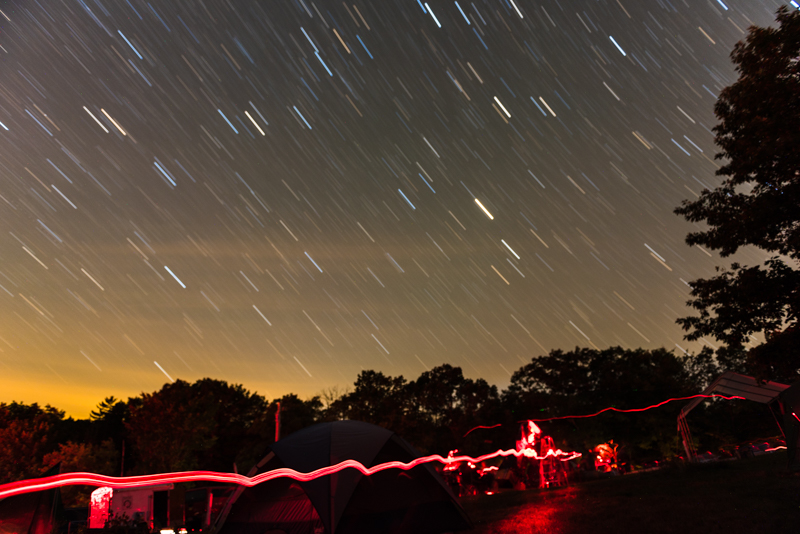
There was a decent number of people walking around with red lights (so as not to destroy night vision), so a number of my shots ended up with some red light trails near the ground. (That’s that wobbly red line.)
I also took a decent amount of short exposures (10-16 seconds). At 24mm on the D750, 13 seconds seems to be just about when stars start to turn into trails.
This is the only staged shot—I intentionally left one of our red flashlights on in the tent to provide something interesting in the foreground.
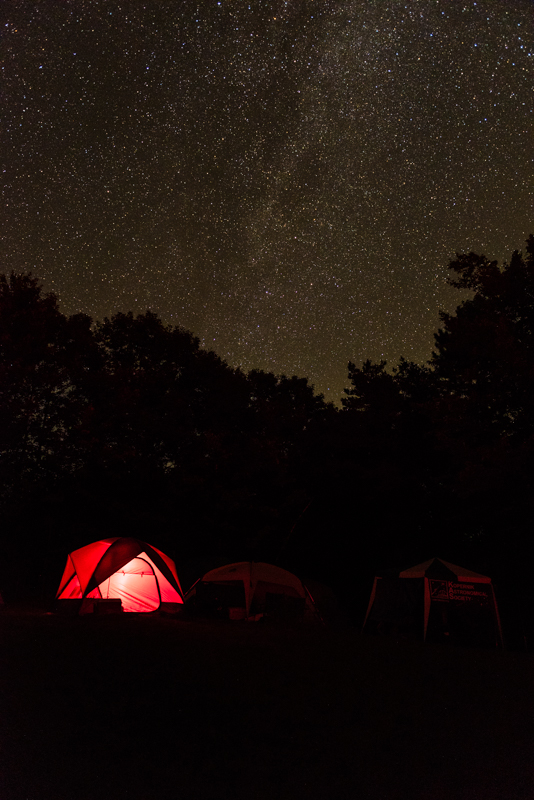
Here is our tent-neighbor and friend looking up at the sky. He didn’t actually know that I was taking a shot of the milky way, and I didn’t realize that he managed to sneak into the frame. The trees got lit up by some joker driving around with headlights on. I expected that to ruin the shot, but it actually worked out pretty well.
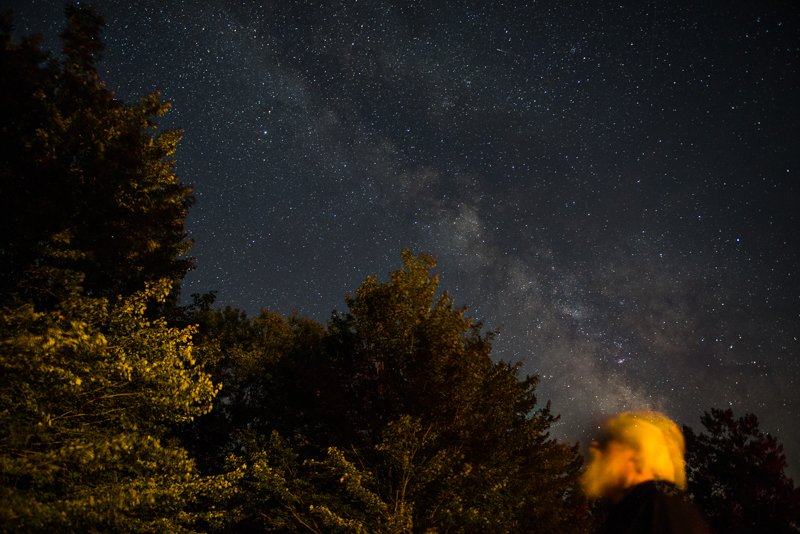
Friday
Friday is the first full day. I started it by hiking to the other side of the site, which not only sports a nice view, but also nonzero phone and data coverage:
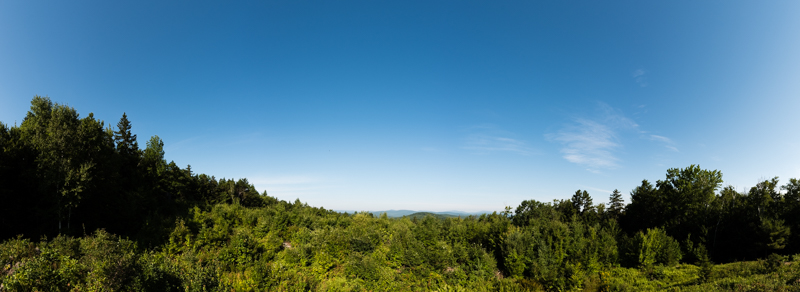
The original club house is there as well in all its pink glory:
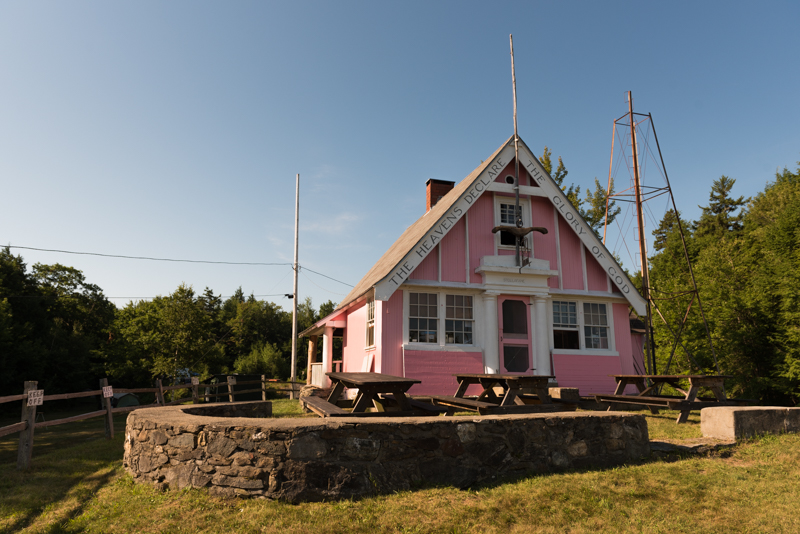
The last, but not least, building there is the turret solar telescope:
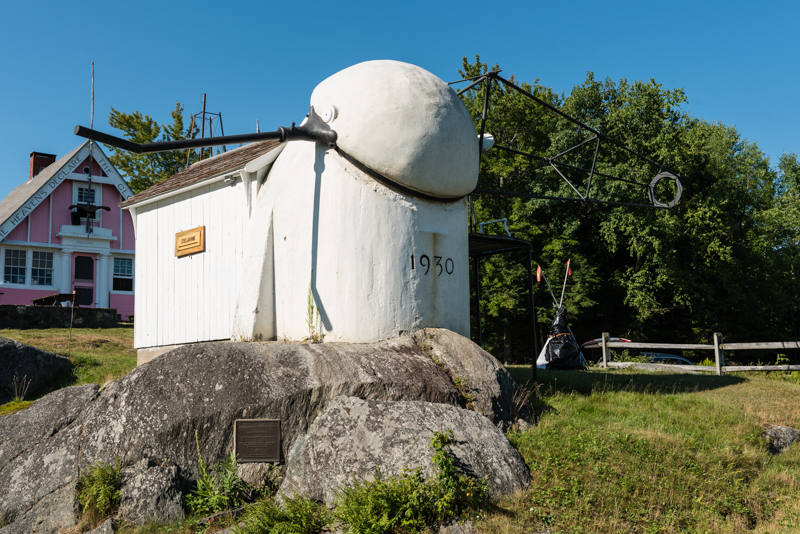
Right next to it is the location of the amateur telescope contest. Yes, people build their own telescopes and enter them into a competition to see whose is the best. This year, the most eye grabbing (in my opinion) was a pair of scaled down reconstructions of the 8-inch Alvan Clark refractor. Here’s one of them:
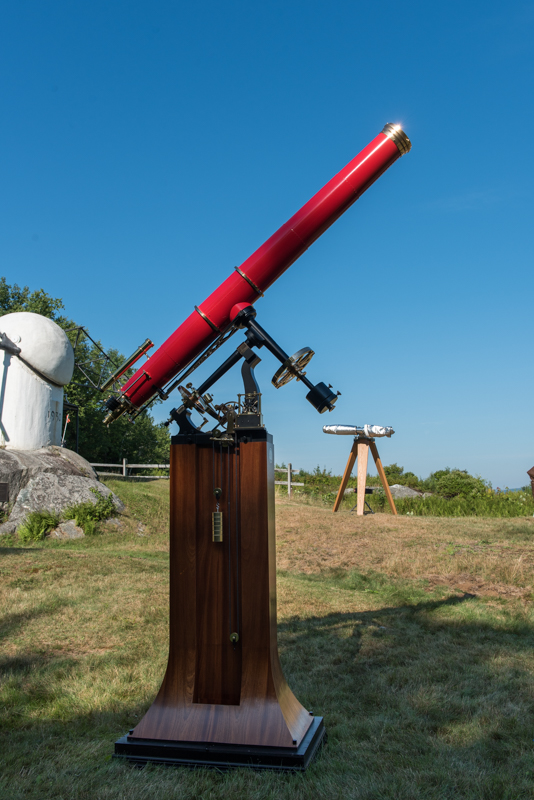
I couldn’t resist taking a couple of close-up shots:
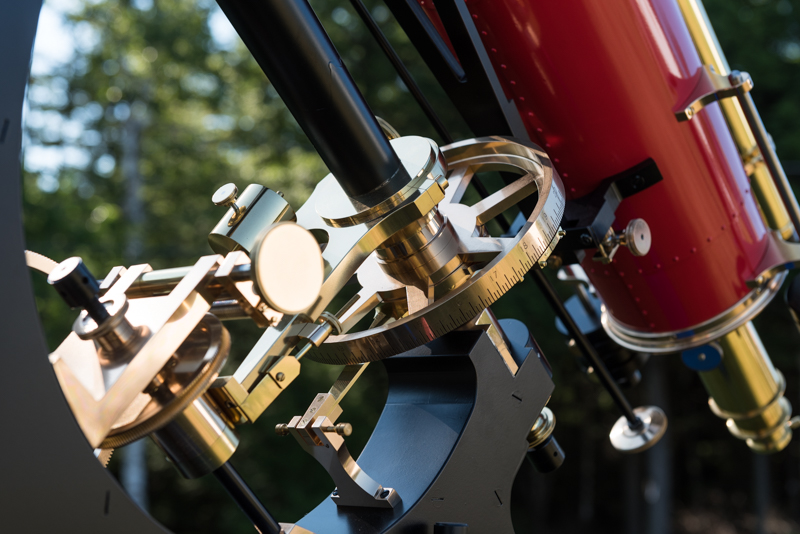
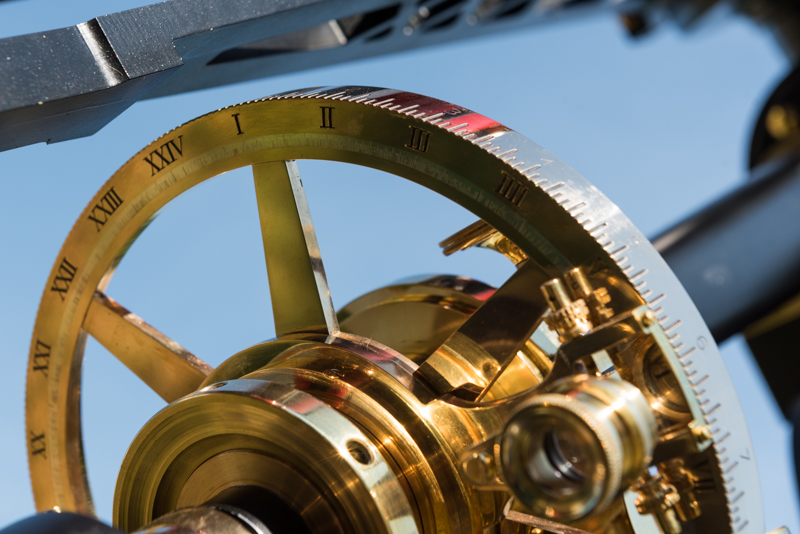
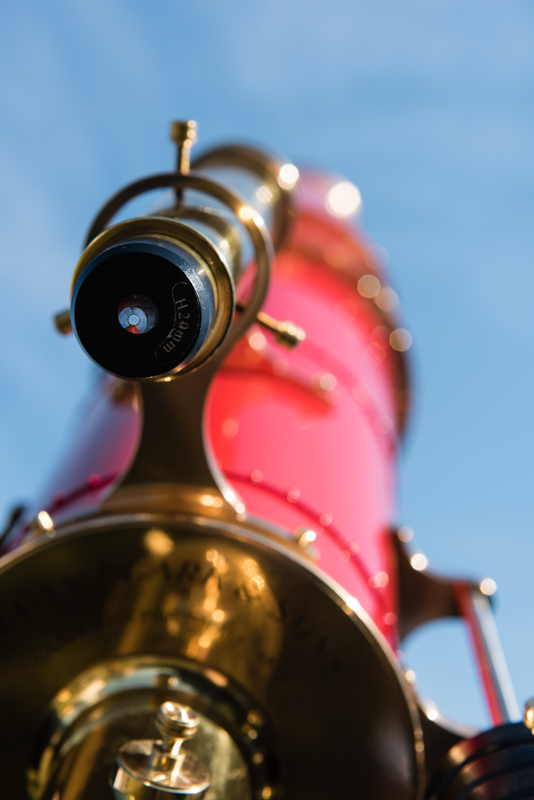
Heading back toward the main site, I walked past the observatory set up in such a way as to be handicap accessible:
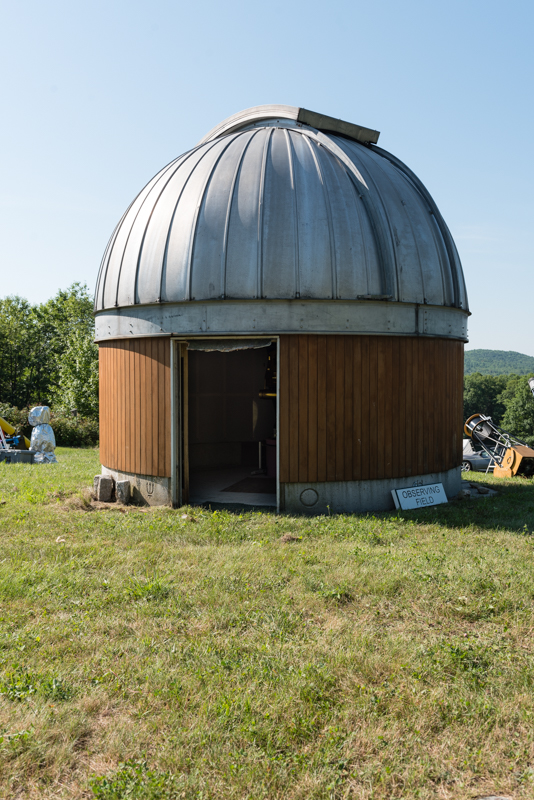
After a breakfast, it was time to go off to the mirror making tent. I think that every year, there is a series of talks and demos about how to make your own telescope mirror.
The speaker letting an attendee give mirror grinding a try:
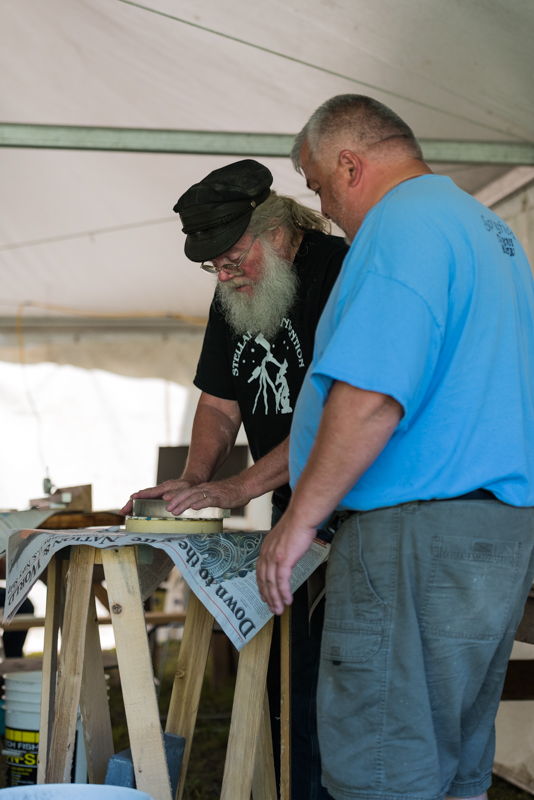
And a close-up of the eventually-to-be-mirror on top of the grinding tool:
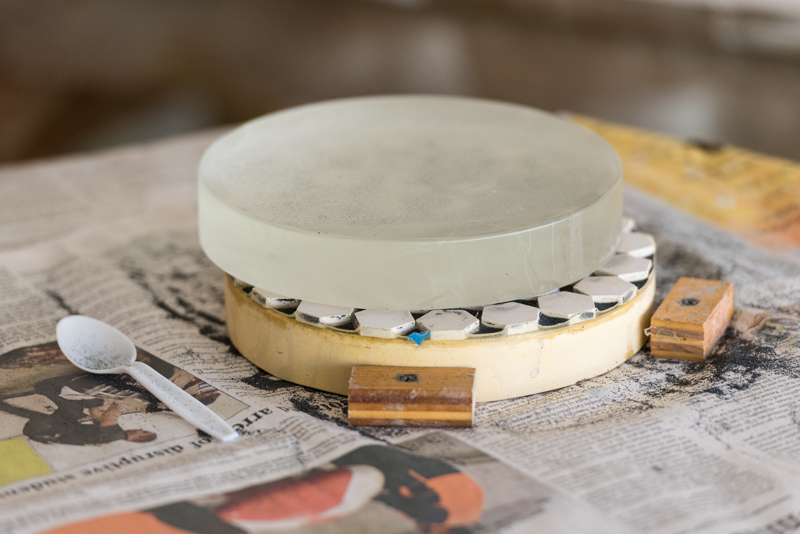
Fine grinding demo using a glass grinding tool instead of the plaster one:
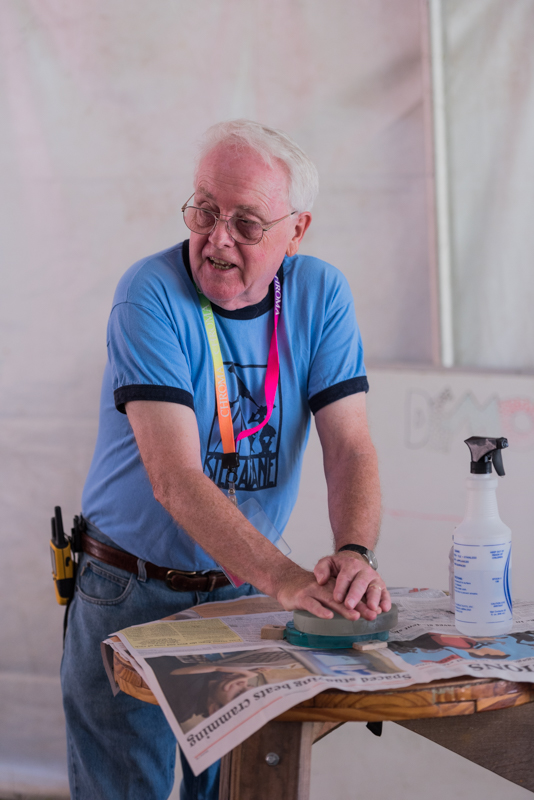
After lunch, there was a series of talks about a lot of different topics—ranging from digital imaging, to “crowd-sourced” occultation timing.
Between talks, I noticed that one of the attendees erected Federation flags in front of his tent:
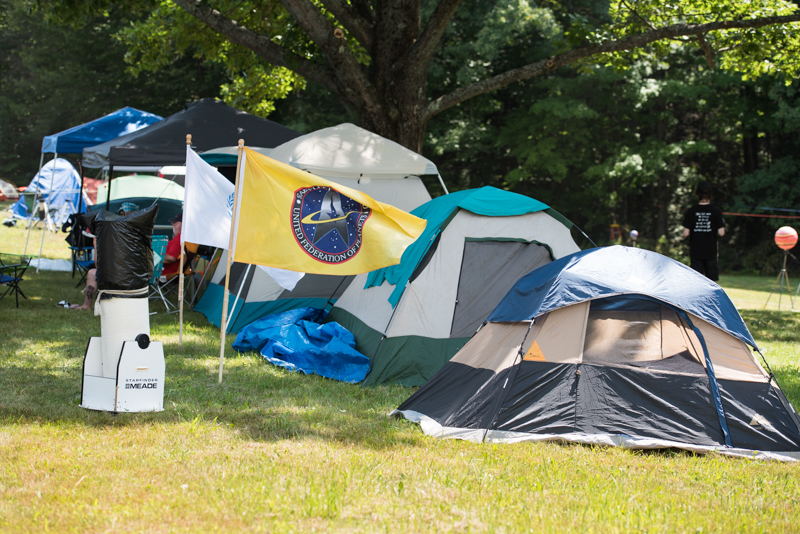
Once night rolled around, it was time for more observing. I took a number of milky way shots. They all look a bit similar, with the only real difference being what is in the foreground. Of all of them from this night, I think this is my favorite—there were a couple of people standing around a telescope talking with their flashlights on.
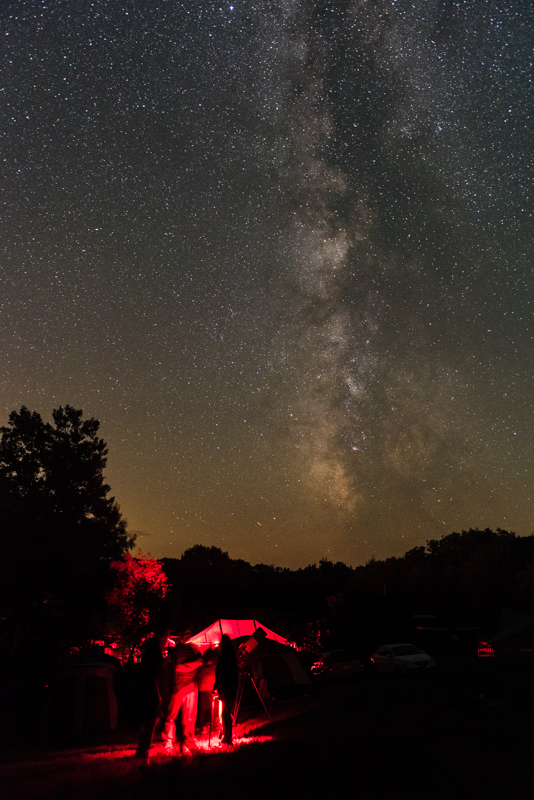
Saturday
The second full day of the convention began with mechanical judging of the telescopes.
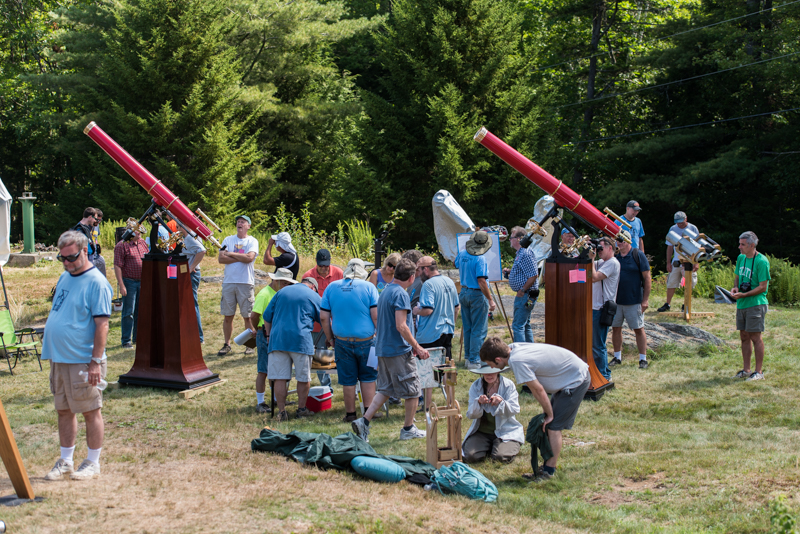
Somehow, I ended up drawn to the twin-scopes; here’s another detail shot. You can see a little bit of motion blur of the governor:
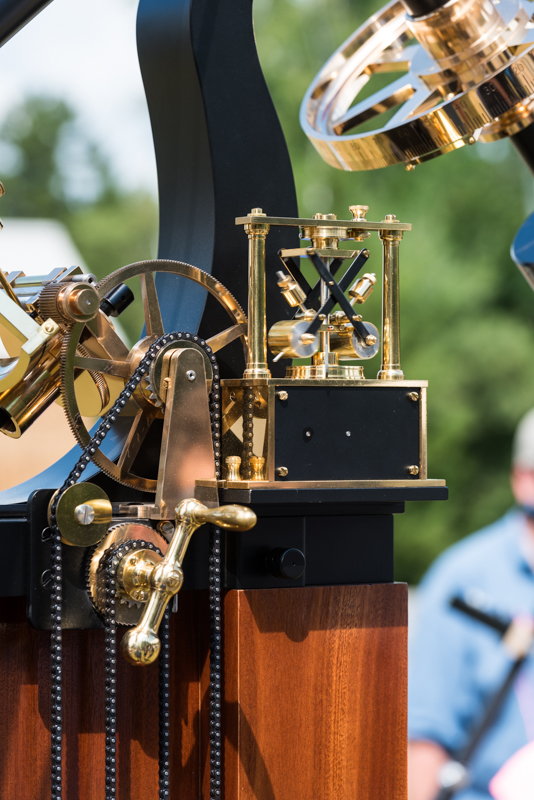
The day program was similar to Friday’s—the mirror making talks and after lunch a set of talks on various topics.
The evening program consisted of the keynote, raffles, competition results, and other customary presentations. The sky was completely covered with clouds till about 1am at which point it started to be conducive to stargazing. Oh well. Two clear nights out of three is pretty good.
Sunday
Sunday is all about packing up and heading home. During breakfast time, I ended up walking around a bit and I got this image—with the food tent in the foreground, the handicap accessible observatory near the background, and the McGregor observatory with a Schupmann telescope in the very background.
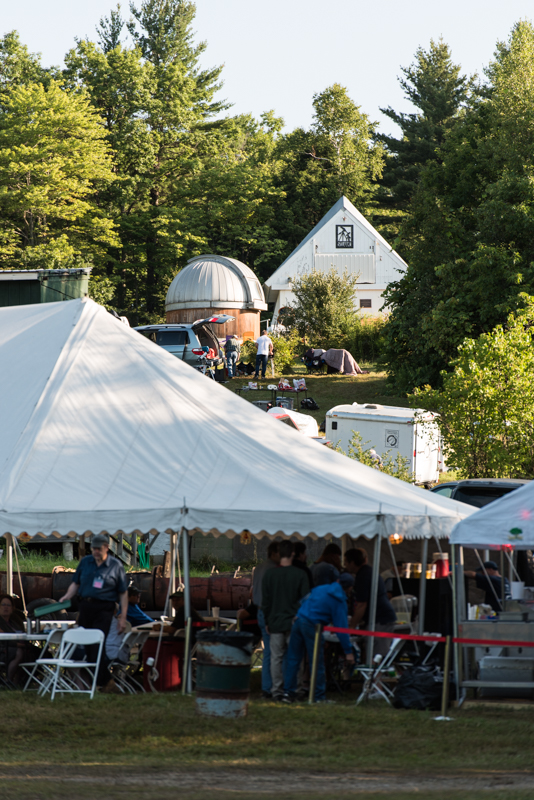
So, that’s how I spent the last weekend. I’m already plotting and scheming my next astrophotography adventure.
